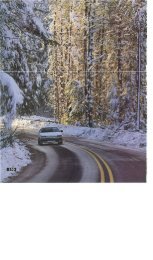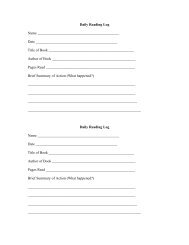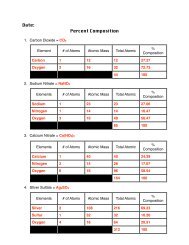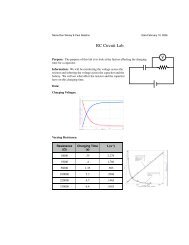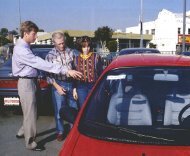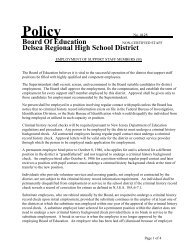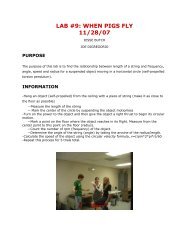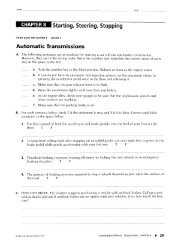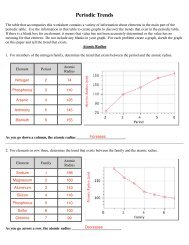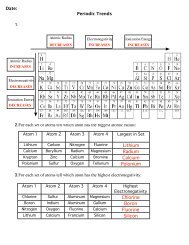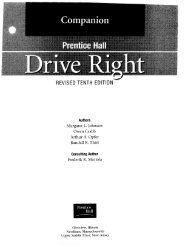Chapter 6 Performing Basic Vehicle Maneuvers
Chapter 6 Performing Basic Vehicle Maneuvers
Chapter 6 Performing Basic Vehicle Maneuvers
Create successful ePaper yourself
Turn your PDF publications into a flip-book with our unique Google optimized e-Paper software.
of the steering wheel at the<br />
12 o'clock position.<br />
4. Release pressure on the brake just<br />
enough to allow the vehicle to<br />
creep backward slowly.<br />
5. While looking back through the<br />
rear window, move the top of the<br />
steering wheel toward the direc-<br />
tion you want the back of the<br />
vehicle to go.<br />
6. Keep your foot over the brake<br />
pedal while your vehicle is moving<br />
backward. Glance quiddy to the<br />
front and sides to check traffic.<br />
Continue to look back through the<br />
rear window as you brake to a stop.<br />
Backing a Stickshi <strong>Vehicle</strong><br />
You can back slowly in a stickshift<br />
vehicle by carefully controlling your<br />
use of the clutch pedal at the friction<br />
point. Follow these steps for backing<br />
in a stickshift vehicle:<br />
1. Push the brake and clutch pedals<br />
down.<br />
2. Shift to REVERSE.<br />
3. Release the brake, and let the<br />
clutch come out slowly to the<br />
friction point.<br />
Holding the clutch at the friction<br />
point allows you to back the vehicle<br />
at a slow, controlled speed. Releasing<br />
the clutch suddenly may cause the<br />
vehicle to jerk back quickly.<br />
Most stickshift vehicles can move<br />
slowly in REVERSE with the dutch at<br />
the friction point and with no accel-<br />
eration. Keep your right foot over the<br />
brake pedal, ready for a stop. When<br />
stopping, push the clutch pedal down<br />
and brake to a smooth stop. Con-<br />
tinue to look back until the vehicle is<br />
completely stopped.<br />
Signaling<br />
Develop the habit of signaling every<br />
time you . plan - to turn, change lanes,<br />
slow, or stop. Signal well in advance<br />
before you begin any maneuver. Doing<br />
so gives other drivers time to react.<br />
Even though all vehicles have<br />
turn-signal devices, there will be<br />
L<br />
times when you use hand signals for<br />
further protection. Hand signals are<br />
often easier to see in bright sunlight.<br />
If your turn-signal device does not<br />
work, use hand signals. Many times a<br />
combination of turn lights and hand<br />
signals will be more effective.<br />
Notice the hand and arm positions<br />
in the pictures. The first picture<br />
shows the left arm and hand pointing<br />
up for a right turn. The secoid shows<br />
the left arm and hand extended<br />
straight out for a left turn. The third<br />
picture shows the left arm extended<br />
downward, indicating slow or stop.<br />
When using hand signals, use<br />
your right hand to maintain steering<br />
control. Make all hand and arm signals<br />
well in advance of entering a<br />
turn. Return your left hand to the<br />
steering wheel before you begin to<br />
execute the turn.<br />
I<br />
Right<br />
Left<br />
Changing Lanes<br />
Drivers must be able to execute the<br />
C<br />
lane-change maneuver smoothly and<br />
safely before hey learn to pass other . ,<br />
vehicles. Changing lanes is a maneuver<br />
you will use often on a roadway<br />
with two or more lanes of traffic<br />
moving in your direction. You also Slow or stop<br />
may need to change lanes before<br />
making right or left turns.<br />
At times, changing lanes gives<br />
- -<br />
you a better position or view when<br />
L-<br />
<strong>Chapter</strong> 6 <strong>Performing</strong> <strong>Basic</strong> <strong>Vehicle</strong> <strong>Maneuvers</strong> 11 1




